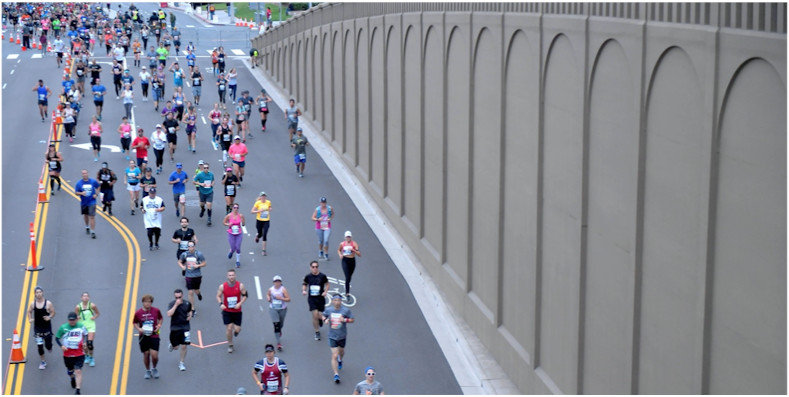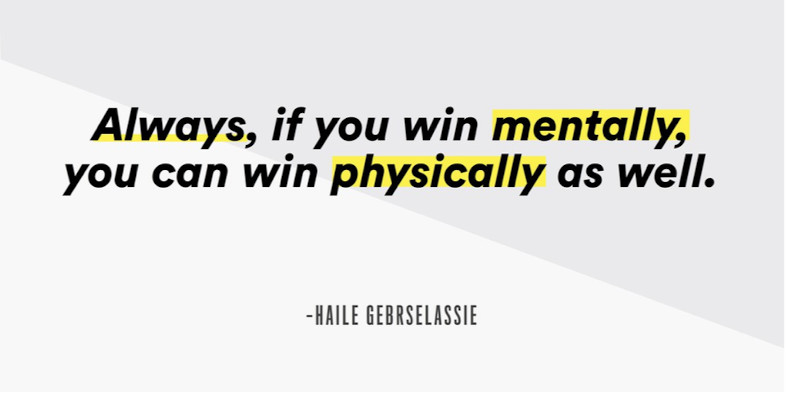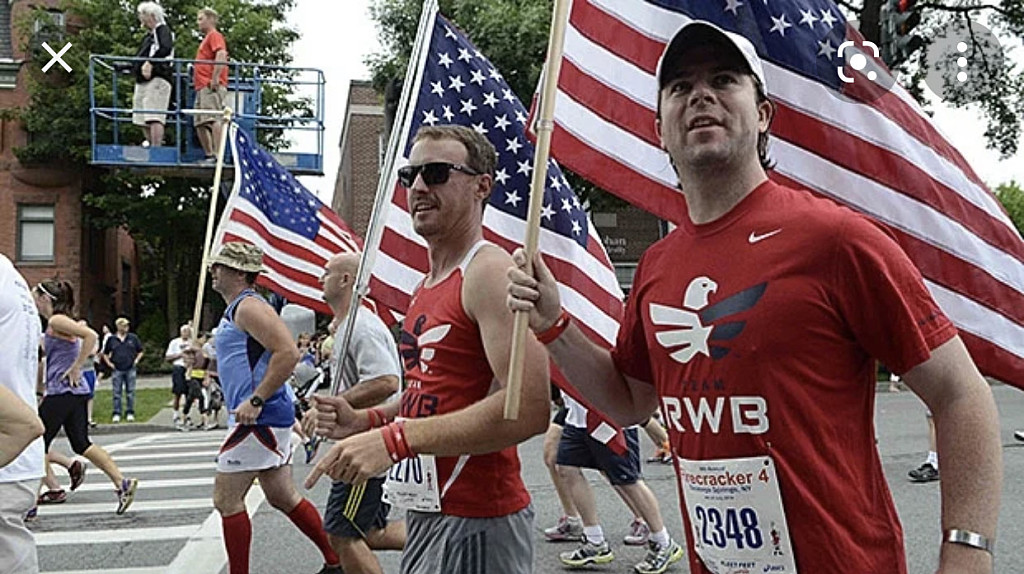Running News Daily
Running News Daily is edited by Bob Anderson. Send your news items to bob@mybestruns.com Advertising opportunities available. Train the Kenyan Way at KATA Kenya and Portugal owned and operated by Bob Anderson. Be sure to catch our movie A Long Run the movie KATA Running Camps and KATA Potato Farms - 31 now open in Kenya! https://kata.ke/
Index to Daily Posts · Sign Up For Updates · Run The World Feed
Thinking About Racing Again? Here’s How to Approach the Starting Line for the First Time in a Year
Consider why you race—those reasons play a big role in deciding when to lace up again.
If you’re feeling a little rusty after a year or more without racing, the first thing to know is that your competition drought is, unfortunately, the norm. Although it may feel like races have been popping up most weekends since fall, most of those have been limited to small elite fields. The rest of the running world has been watching and biding its time until the racing door swings back open.

The second thing to know is that there are many criteria for returning to racing—like reaching a certain level of fitness, getting vaccinated, or simply craving competition—and all of them are valid. Deciding when to approach your next starting line, and how to frame that first race back, is a matter of preference that looks different for us all.
Depending on the type (or types) of runner you identify with, here are some ways to think about your comeback.
If You Race to Stay Motivated
As with a deadline at work, some runners need a race on the calendar to focus and structure their training. Susan Griffen, who splits time between Frankfort, Michigan, and Los Angeles, falls into that category. Whether in-person or virtual, her commitments hold her accountable and add a sense of purpose to her miles (as do the causes she supports through her racing).
Following a string of virtual races, Griffen plans to line up in October for the London Marathon, which will be her sixth and final World Marathon Majors race. In the meantime, once she is fully vaccinated, she hopes to race locally as part of her build-up. The uncertain future of mass events doesn’t shake Griffen’s approach.
“As far as my training, I will pretend [London’s] happening,” she says. “It’ll keep me sane and fit.”
Comeback Tips: If you’ve been running virtual races, you shouldn’t feel as out of your element in a real race as you might otherwise (although being in a crowd may still feel unsettling). You can, however, expect to get a little more out of yourself from the atmosphere and competition.

For those holding out for an in-person event, it looks like you’ll be back in business late summer or early fall. If you’re eager to start training with a goal in mind, it may be time to register for (or plan on) a race, with the least risky option being small local road races in the fall.
If You Race to Capitalize on a Good Opportunity
Dawn Grunnagle, a three-time Olympic Trials qualifier and youth coach in Dallas, says that “opportunity to race is number one” in her return-to-racing criteria. Similar to Griffen, Grunnagle trains best with “something solid” on the calendar. But virtual races don’t quite do it for Grunnagle, who’s waiting for an in-person opportunity that feels meaningful and exciting.
“Once I have a set date for a race,” she says, “I know my physical and mental fitness will come around to be ready on that day.”
Grunnagle’s last race was the Olympic Marathon Trials in February 2020, and her next big one will likely be a fall marathon. There, she plans to “jump in and rip off the band-aid.” She sees it as a fresh start, as well as an opportunity to practice staying positive, to trust in her coaching and preparation, and to get even stronger for her next battle.
Comeback Tips: If, like Grunnagle, you’ve had a long gap between racing opportunities that fire you up, you can expect your options to increase by the month. Depending on how hard you’ve been training (or not) this last year, it may take you a while to get back in the swing of structured training and reclaim a competitive mindset. Grunnagle’s advice is to focus on daily and weekly improvement, be consistent with your training, and believe that your fitness will fall into place.
If You Race When You Feel the Itch
New York-based Allison Devereux treats racing like a surfer treats a big wave. They’re out there, watching for opportunities, and when a wave of motivation comes, they ride it. The New York City Marathon, held every November (in non-COVID years), typically gives Devereux a reason to ramp up her training the prior spring. The thawing of the city around that time helps, too.
Devereux ran 2:57 in the 2019 edition, which was her last race, and is waiting to hear whether she’s been accepted into this fall’s field. With spring in the air and a decision coming soon, she senses some momentum bubbling beneath the surface. The return of races in general will likely fuel her fire, too. “I miss waking up early and running with a big group of strangers,” says Devereux. With mass vaccinations under way, soon that might not be such a crazy concept.
Comeback Tips: 2020 wasn’t an inspiring year for road racers, to say the least. If your motivation has flagged, that’s understandable. Honor your cravings (as you might with food) and look for the next scheduled race that gets your heart pumping.
If, on the other hand, your eagerness to compete has been building, use that a secret weapon for your next race. Either way, Devereux recommends a slow transition back. Rather than fixating on speed or mileage, focus on “recovering the pure, simple joy of getting outside and running,” and trust that the urge to race—if not already present—will follow.
If You Race Your Way to Full Fitness
Then there’s the type—take Molly Grabill of Boulder, Colorado, for example—who uses early-season races as stepping stones leading to future goals. These runners start racing when they’re in good shape but not at 100 percent, and they keep lining up until (ideally) they’re in peak fitness for their target race. This approach works for Grabill because it takes some pressure off individual races and offers frequent, valuable benchmarks.
After placing 25th in the Olympic Marathon Trials, Grabill dialed back her training for the first nine months of the pandemic, slashing her mileage from triple-digit weeks to 25 to 30 miles per week.
Almost a year to the day after her last race, and on just six weeks of focused training, Grabill kicked off her 2021 track campaign with a 10,000-meter race in Austin, Texas. She walked away from that race with a PR (32:46), a runner-up finish in her heat, and a solid step taken towards her goal of qualifying for this summer’s U.S. Olympic Track and Field Trials, which will be hosted by her alma mater, the University of Oregon. Grabill hopes that race was the first of many between now and June, and has her eyes set on another 10,000-meter attempt in May.
Comeback Tips: First (and half-jokingly), Grabill pleads, “Don’t use the phrase ‘rust-buster’ or say you haven't done speedwork.” No one is in PR shape year-round, so you don’t need an explanation for a sub-stellar result—especially on the heels of a global pandemic. More seriously, Grabill says, “I think being confident in your running ability, and okay with where you are in your fitness, is the best way to feel successful.” As you reenter the racing scene, try to see those early ones like quizzes en route to an exam (your end goal); how you’re trending is a better metric than any one result.
If You Race to Run Fast, Place High, or Crush a Big Goal
Some people race only when they feel ready to run really well—whatever that means to them. American 25K record-holder Parker Stinson says, “I want to always be at a starting line feeling prepared and like I have a chance to break a PR or go for the win.” If he’s not in that position, he’d rather stay home and train, saving that max effort for a better day.
That doesn’t mean that all of Stinson’s races are a home run. But by constantly putting himself in positions in which running well is likely, his successes mount and his confidence soars.
In January, Stinson ended a 15-month racing lull that started with a knee injury after the 2019 Chicago Marathon, extended through 2020 (and kept him out of the marathon trials), and ended with his victorious comeback in a Naples, Florida, half marathon. He chose that race because it was low-key and he liked his odds of winning. Next up for Stinson is a half marathon in Omaha in late April, where his main objective is to “run really fast.”
Comeback Tips: Big goals come with some degree of nerves and pressure—especially when you haven’t chased one in a while. Don’t be surprised if, like Stinson, you feel “nervous as hell” before your return. Two things helped him transition back smoothly. First, he ran a few indicator workouts leading up to the race that helped him set realistic goals and boosted his self-belief. Second, Stinson reflected back on everything that seemed to work in past races, from his wakeup time and pre-race breakfast to his acknowledgement that “it’s not a workout and it’s going to hurt really, really bad.”
If You Race When You Feel Ready to Brave a Big Crowd
Though an outlier among elites, Boston-based Kaitlin Goodman has plenty of company among road racers at large. As she detailed in December, the four-time Olympic Trials qualifier, coach, and public health professional won’t race until she and more people are fully vaccinated, COVID-19 is better contained, and she feels that the rewards of racing outweigh the risks. She also cares about a race’s safety precautions, such as a mask and vaccination proof requirements.
The last starting line Goodman toed was the Olympic Marathon Trials in early 2020, and her next one probably won’t be until this summer or fall. In the meantime, she’s hardly sitting around waiting for the pandemic to pass.
“I’m keeping up baseline fitness,” she says, “so when the time comes for me to compete again, I can jump back into race-specific training, hopefully without any injuries.” She’ll also run some solo time trials to reduce the shock of a race-like effort.
Comeback Tips: Waiting to race until you feel completely safe and ready to brave big crowds is as respectable of a requirement as it gets. Mass events may not reach pre-pandemic safety levels for a while—Goodman points out that the CDC still advises against medium- and large-scale gatherings (even for the vaccinated)—but there are other ways to test your fitness until they do. In addition to running time trials, Goodman suggests signing up for virtual races, which have the added benefit of supporting a financially strapped race organization. 

Meanwhile, keep an eye on CDC recommendations and know that peace of mind is a powerful performance enhancer, no matter how long you’re away.
by Runner’s World
Login to leave a comment




